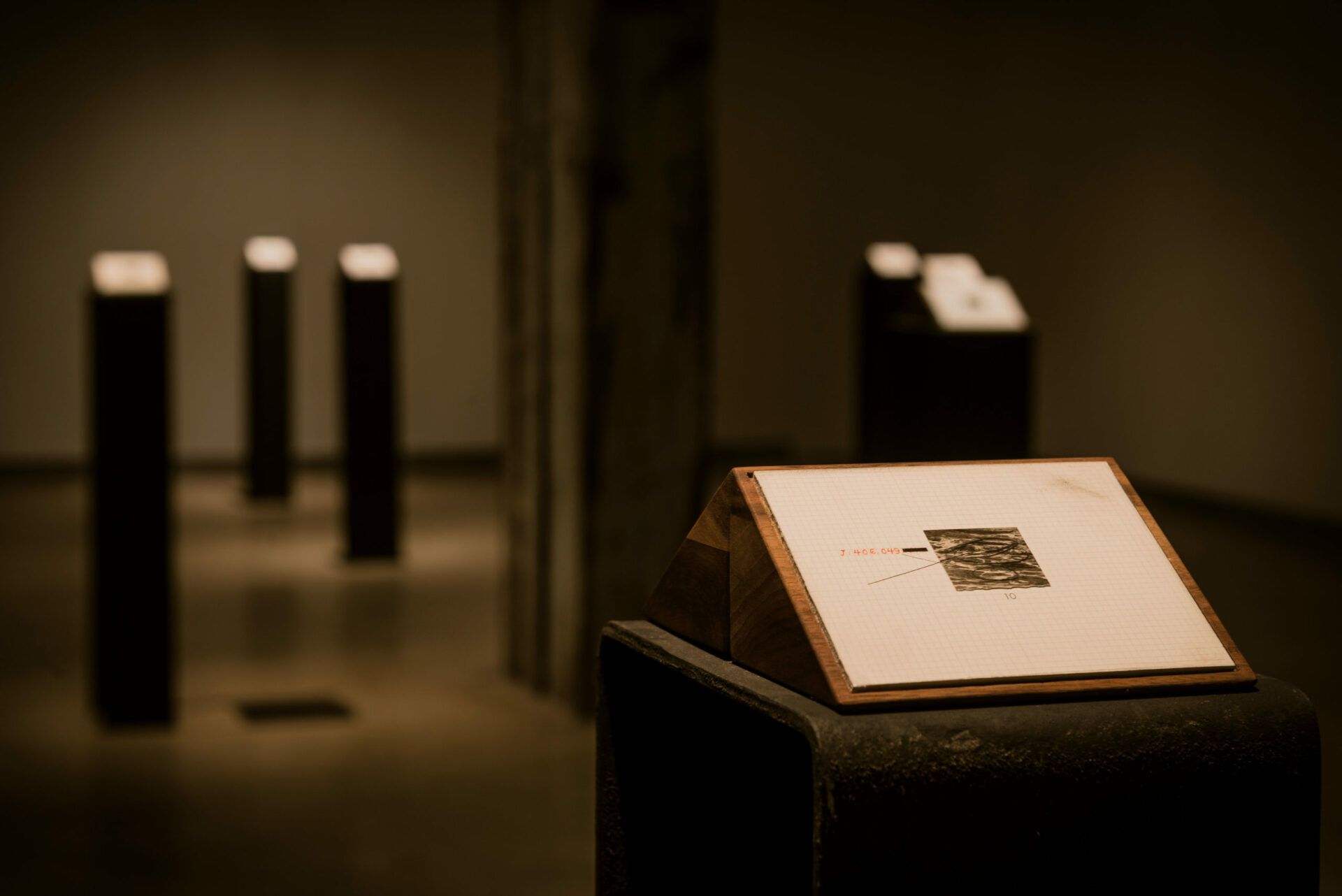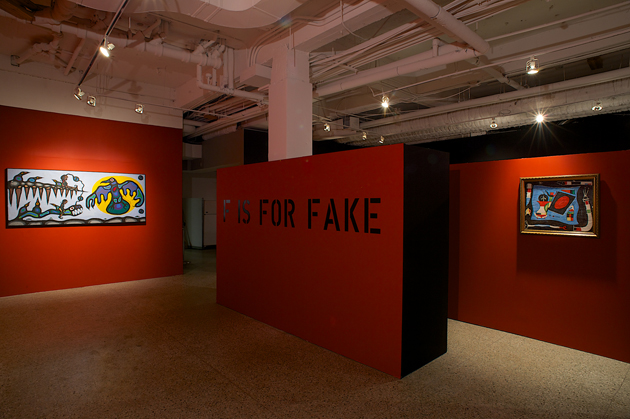
Photo : © Maxime Boisvert
[En anglais]
Presented at Darling Foundry for the summer months was Asylum in the Sea, an exhibition composed solely of an eponymous series by artist Hajra Waheed. The series is one iteration of a larger, ongoing body of work, Sea Change (2013 –), a visual novel tracing the lives of nine Indian men. The men are revealed only partially in The Missed (2012) and reappear in The Missing (2013), two series of collages made of cut and reconfigured photographic postcards from the era of the British Empire — a collection assembled in the mid-twentieth century by a friend’s relative — pasted onto yellowed archival paper. The sepia tones, combined with the vintage appearance of the paper, allude to the visual language of colonialism and the typical portrayal of its subjects. Asylum in the Sea acts as a prequel by representing the disappearance of the nine characters, as a visual diary of their presumably fatal journey at sea.
Rows of slim posts occupy a dimly lit room. The space, unlike the tumultuous ocean, evokes meditative respite. Elevated on the slender plinths are twenty-four postcard-sized works, mounted on triangular wooden supports. On one side of each support is a finely pixelated monochrome gouache drawing on Mylar, laced with elusive dot patterns. Opposite this detailed — yet strangely barren — dot drawing is a magnified photograph of the sea. Seascapes were the subject of Waheed’s Witness (2013), a series of negative glass-slide collages in which the visual elements of the sea are absorbed to show only its surroundings: sand, rocky cliffs, palm trees. In Asylum, however, images of the ocean are enlarged, and the abstracted waves are framed by a delicately painted motif of graph paper. Handwritten coordinates, arrows, circular and triangular outlines, and numbers float around the photographs. They refer to unknown locations, or perhaps frequencies. The misleading “pseudo-scientific”1 1 - Hajra Waheed, “Sea Change: Chapter 1 — Character in the Rough,” consulted August 20, 2015, http://hajrawaheed.com/works/sea-change/character-1-in-the-rough/. quality of these symbols defies rational elucidation. The information inscribed by Waheed is intrinsically confrontational; while the symbols are legible, their association with referents is seemingly disrupted, and the expectation of meaning is therefore rebutted. As is true of most of Waheed’s work, the visual elements of Asylum look and read like meticulous documentation. In this particular case, it is that of “the stillness of the sea, in the moment in which an object is swallowed by it.”2 2 - Ibid. Here, the object feels like it sunk mere moments before our arrival. Hence the uselessness of the coordinates, however precise they are, and the perfectly vain impulse to search for the disappeared object’s visual imprint. One is left to deal with the disorientation imparted by the interactions of the textual, graphic, and photographic elements as anguish sets in.
Créez-vous un compte gratuit ou connectez-vous pour lire la rubrique complète !
Mon Compte


